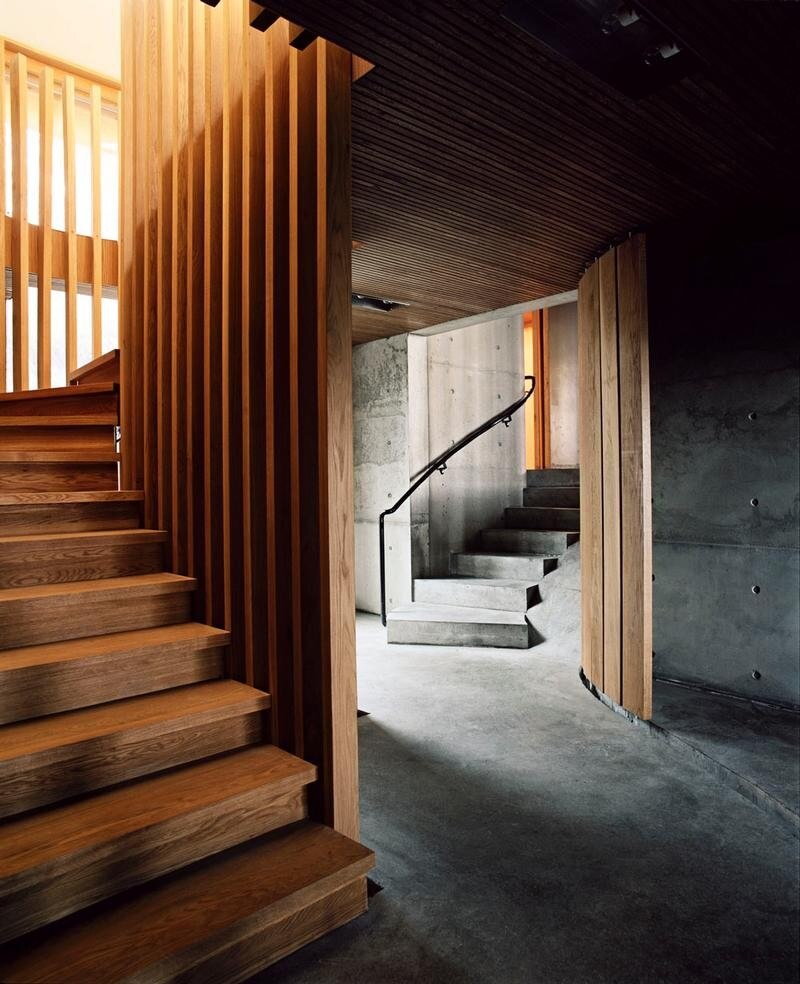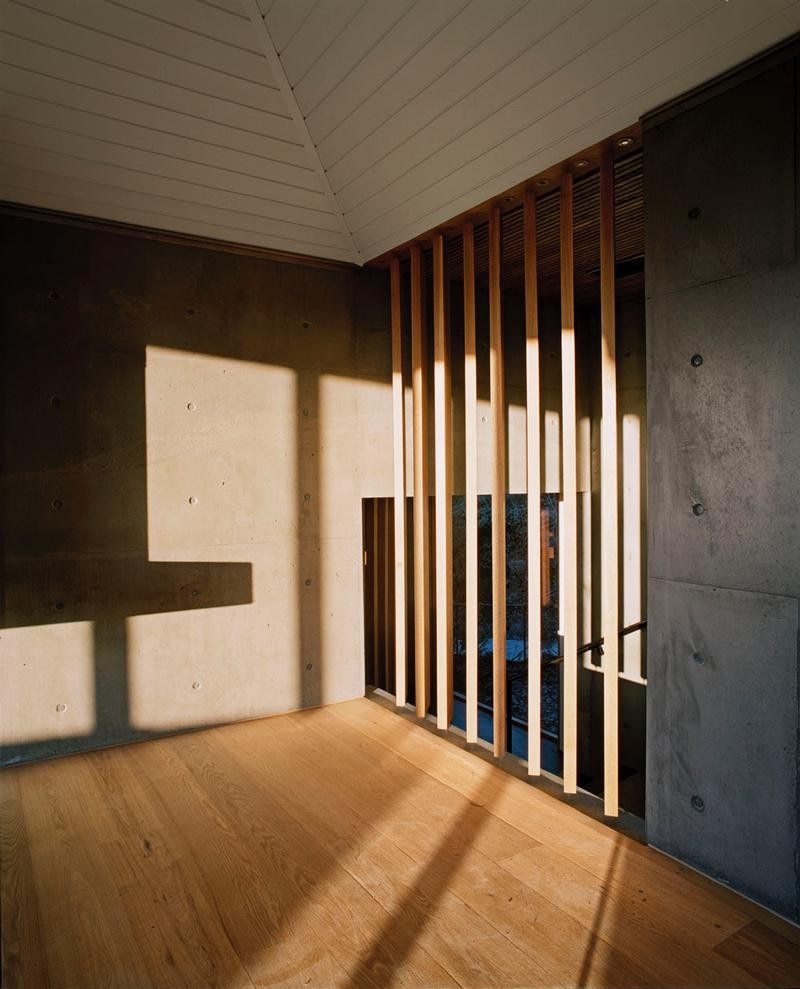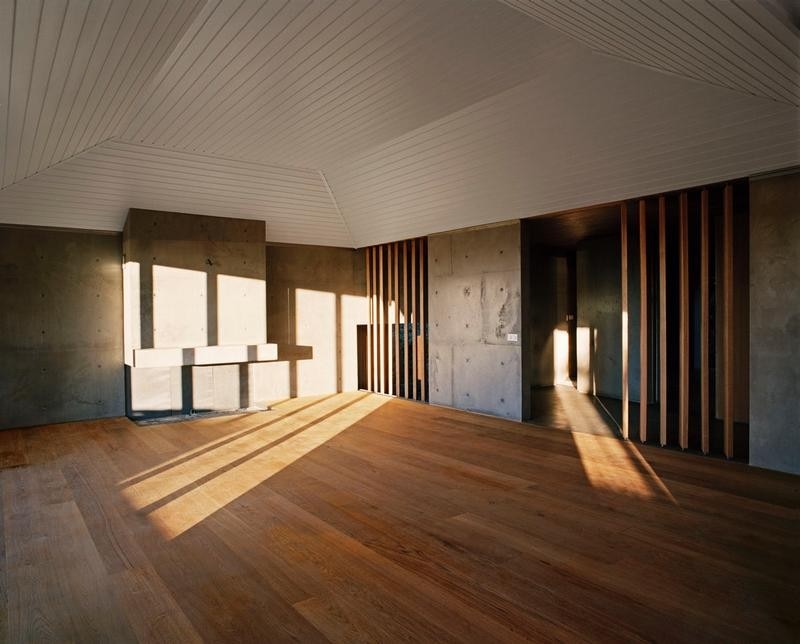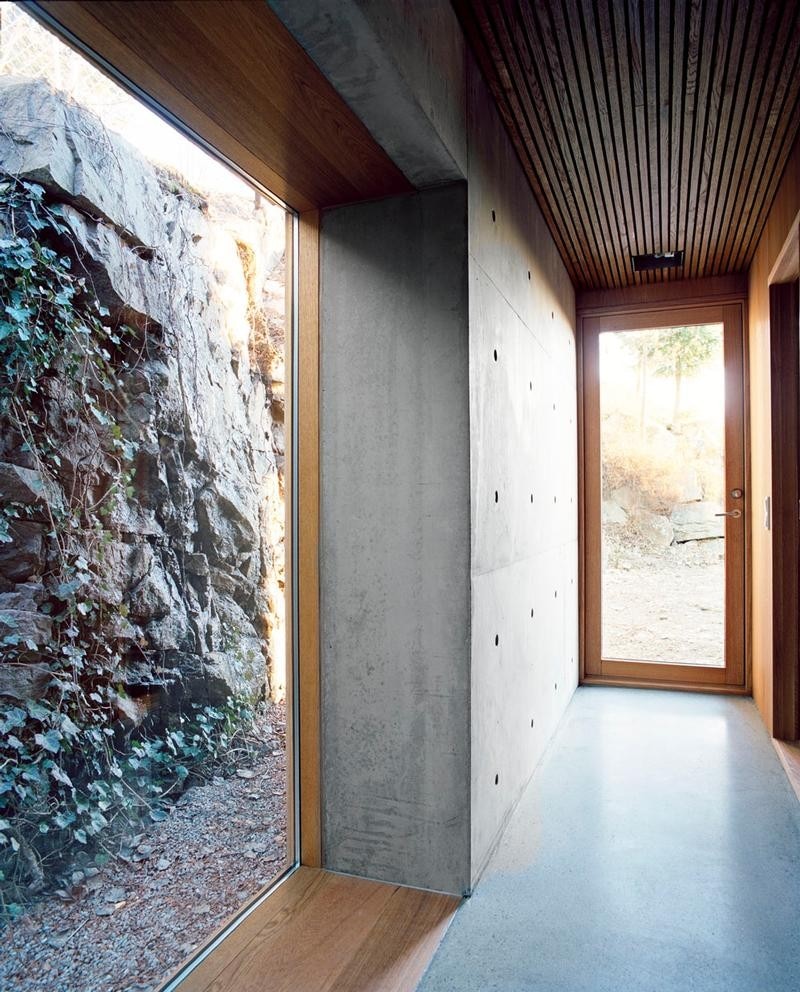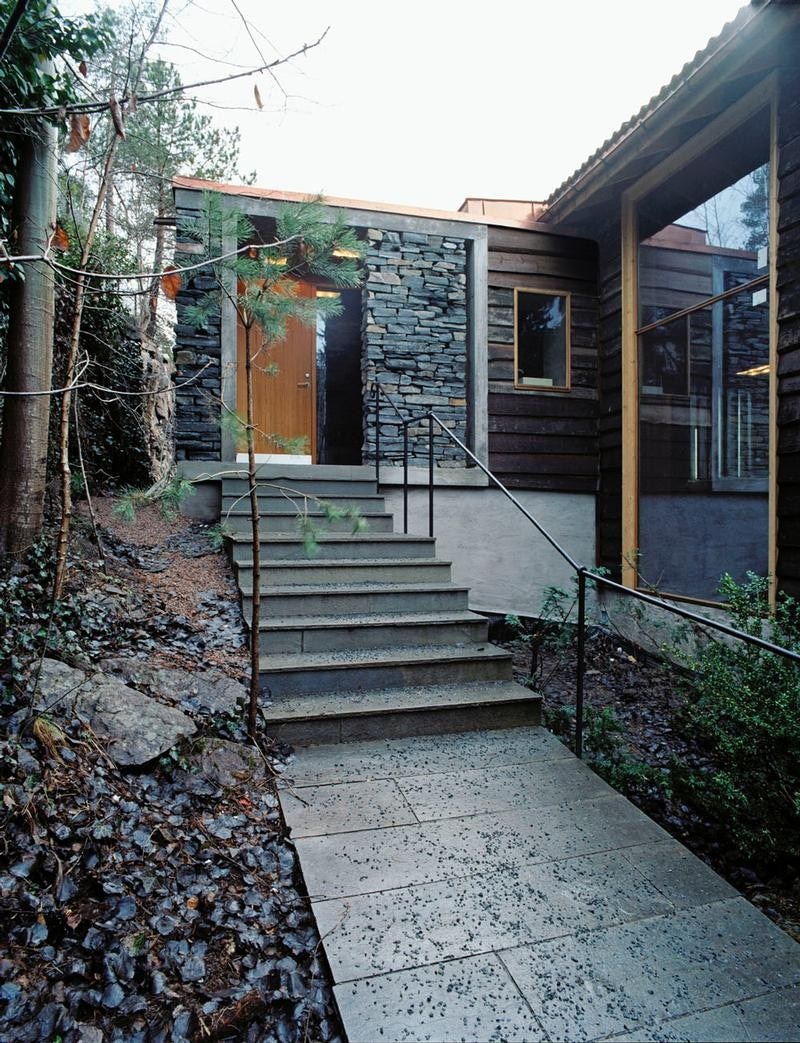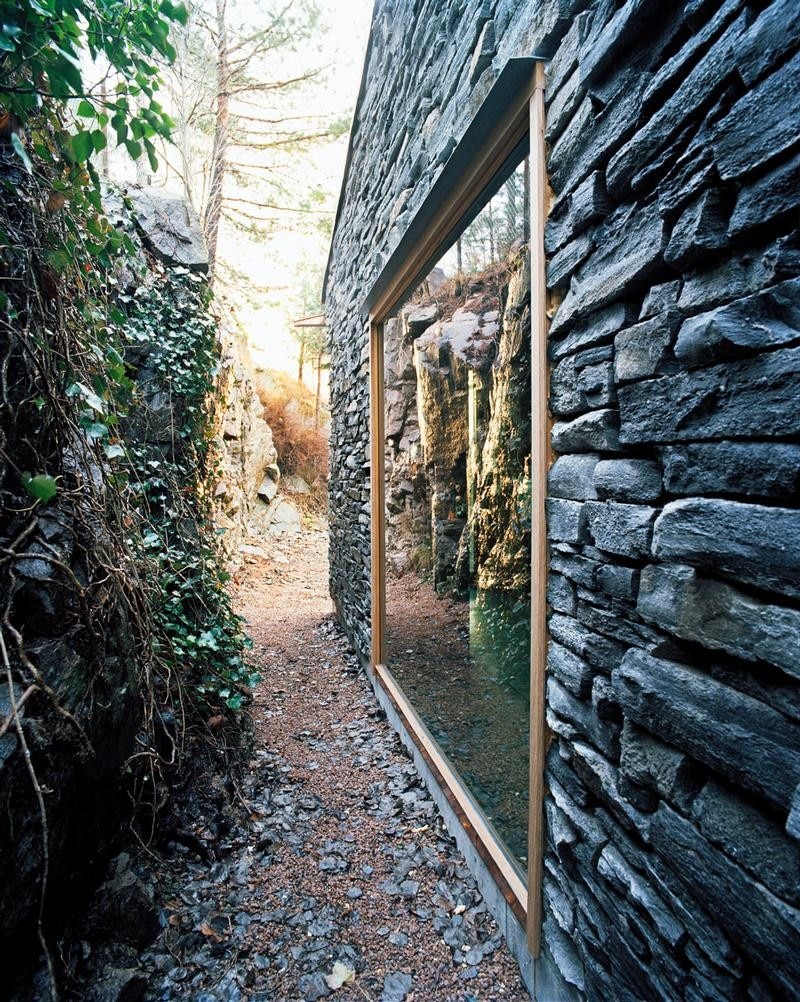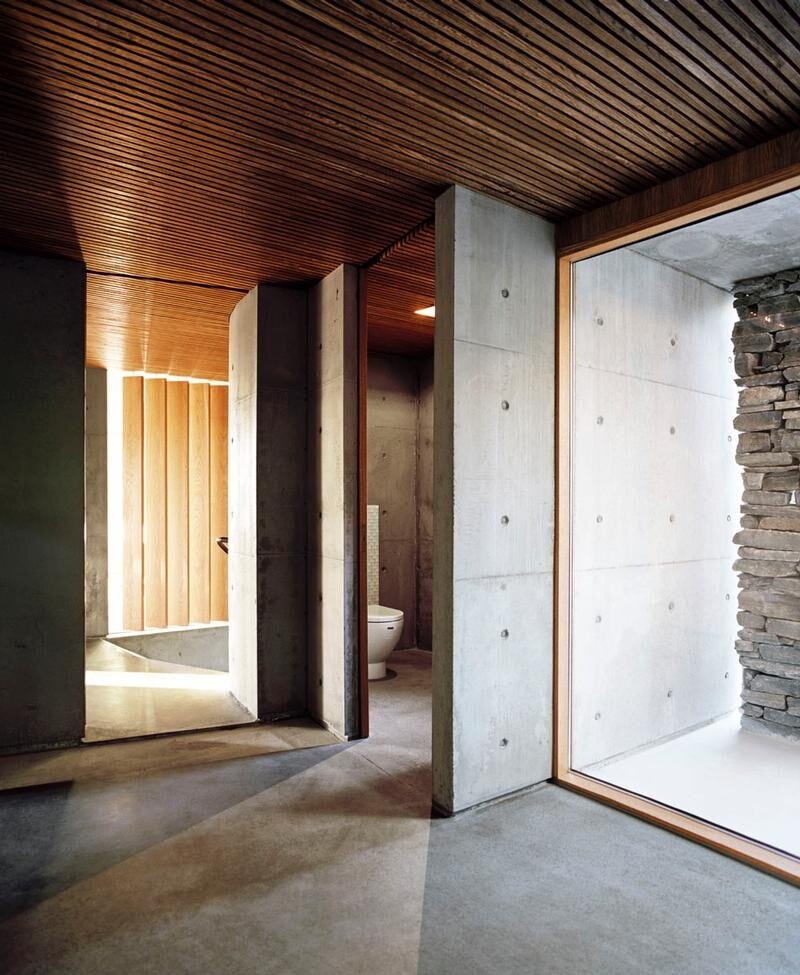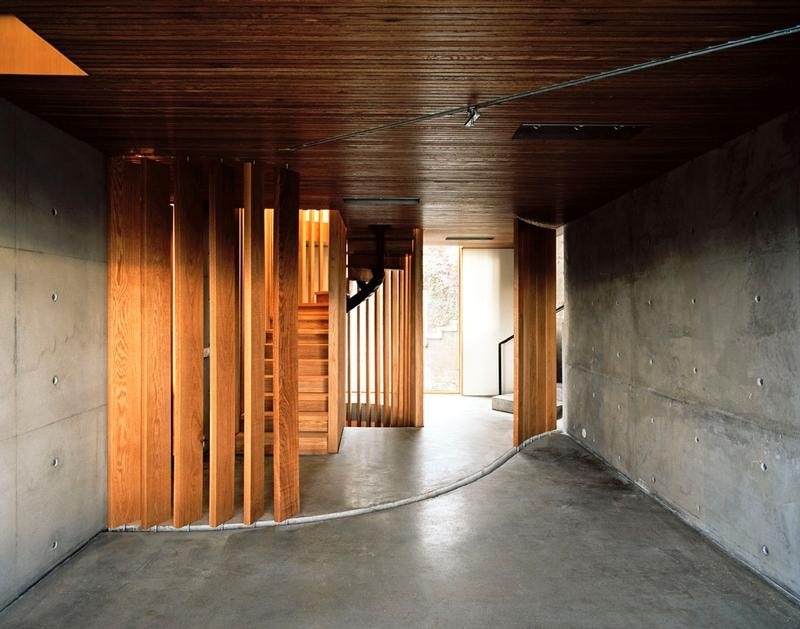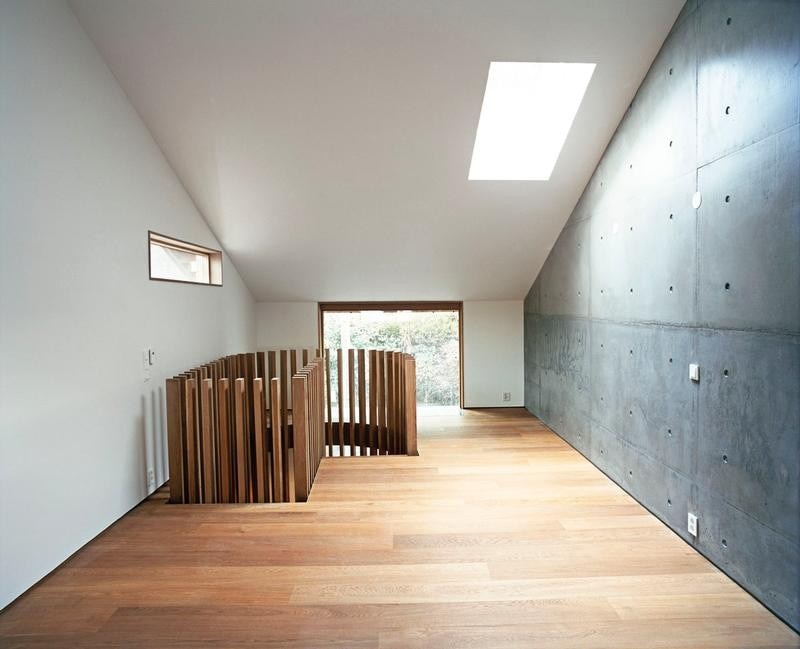So it made sense for local architect Einar Bjarki Malmquist to create a kind of daylight machine when friends approached him to remodel their 1970s wooden house. In a time when architecture is often loud and demands attention Einar’s solutions are remarkably discreet and subdued. Set in the upmarket leafy hills of Holmenkollen above the centre of Oslo, the remodelled house does not stand out from the other villas in the neighbourhood, thus matching the owners’ privatenature. The transformation is in deed so invisible from the outside that it is a shock to see the imaginative architectural world on the inside.
The entrance at the back of the house is set very close to a small rocky cliff face that would normally be ignored when creating an architectural focal point. Surprisingly, the architect has inserted a very large window in the entrance, thus framing the gray cliff face as a work of art, connecting the whole house with the site and its natural environment. The effect is stunning, reminiscent of a quiet Japanese rock garden. A new picture is painted every time the rocky cliff face and the evergreen vines are covered with snow crystals or cascading rainwater.
The quiet poetry of the rock face of the entrance is in stark contrast to the drama of the panoramic views in the living room, where the family can sink down in wellworn chairs and contemplate the misty waters of the Oslo fjord and the hills in the horizon. In summer, the owner can bring nature even closer into the house by folding open the large doors covering the wall in the living room, creating the atmosphere of an intimate and breezy beachside hotel lounge. The client, Tuva Skotland, is a ski instructor, and adores life in the great outdoors. – I would actually prefer to be outside all the time – so it was very important to draw nature inside. I feel free here, she says.
A massive concrete fireplace hovers above the floor in the living room, almost defying gravity, giving the space a sense of solidity and anchoring the whole room to the house. Einar Bjarki Malmquist says his design not merely focuses on the visually pleasing, but on the human body in relation to the built architecture. The design solutions are playful and human. The stairway leading from the entrance to the sleeping quarters curves its way downward in a soft and gentle manner. Rooms are separated by upright wooden planks that can be twisted and turned as giant venetian blinds, allowing for flexible reconfiguration of spaces. As the sun travels through the house during the day the planks draw decorative shadows on the concrete walls, making it clear that we don’t live in a static world.
The wooden beams wrapping the stairs leading up to the master bedroom appear as a warm biological spinal cord in the centre of the house. Einar believes the key to successfully establishing a strong and coherent architectural theme is using a small palette of exquisite materials. By using exposed concrete set against oak wood, the whole interior echoes Japanese architectural masters. The two materials need each other, the one bringing out the beauty of the other. The raw concrete walls are beautifully executed, with clean, sharp edges and smooth surfaces, whereas the extensively used wood radiates warmth and proximity. Einar – himself coming from an Icelandic family of skilled labourers - strongly argues that a vital part of architectural beauty lies in cooperating with craftsmen who take pride in doing their job to the best of their abilities. - The importance of excellent craftsmanship is hugely underestimated, he says. - The architectural world could benefit from focusing more on simply building and executing things well, instead of getting lost in grandiose design statements. A river of white stones flow in a depression in the concrete floor, and the house offers a layered journey from the entrance all the way to the bedroom. The various rooms are distinct, but connected, and open up to the other rooms in various ways. It was a pronounced goal to capture and convey the changes of light and seasons even into the inner rooms. Two glass plates set in floor of the master bedroom permit even more natural light to flow into the innermost core of the house. Mother of three Tuva Skotland tells that visiting children have a riot peeking through the glass plates, looking down on people sitting in the lower floor.
The design is a result of an extraordinarily close relationship between client and architect, who met most Tuesdays for about two years, even placing every single light switch together. The architect has given a physical form to the owners’ ideas and practical needs. Tuva feels that the important thing is the life that is being lived inside the house, not the structure itself. She emphasizes that it was important to get the right emotional feeling when making design choices. - But we weren’t looking for a design house, just a solid, practical house whereit’s ok if the kids storm in with slalom ski boots on concrete floor. It is such a simple house to live in.
Torbjorn Goa
Einar Bjarki Malmquist Sivilarkitekt MNAL MArch
Photo Ivan Brodey
